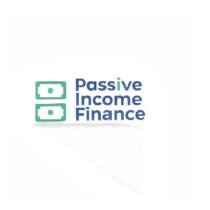Budgeting for Beginners: A Comprehensive Guide
In today’s fast-paced world, managing your finances can feel overwhelming, especially for beginners. However, budgeting is a crucial skill that can pave the way to financial freedom. This guide will help you learn the basics of budgeting, why it matters, and actionable steps to get started.
Introduction
Budgeting is not just about restricting your spending; it’s about understanding where your money goes and making informed financial decisions. For beginners, it can be a daunting task, but with the right approach, budgeting can turn from a chore into a powerful tool for achieving your financial goals.
Why It Matters
Understanding the importance of budgeting is the first step towards financial literacy. Here are a few key reasons why budgeting matters:
- Control Over Finances: A budget helps you take control of your spending.
- Goal Achievement: Whether saving for a vacation or paying off debt, budgeting helps you allocate funds effectively.
- Emergency Preparedness: A good budget includes setting aside savings for emergencies.
- Financial Awareness: Regularly tracking your finances makes you more aware of your spending habits.
Step-by-Step Guide
Here’s a simple step-by-step guide to help you get started with budgeting:
1. Assess Your Income
Calculate your total monthly income, including salary, side hustles, and passive income sources.
2. List Your Expenses
Break your expenses into fixed (rent, utilities) and variable (entertainment, groceries) categories.
3. Set Financial Goals
Identify short-term and long-term financial goals, like saving for a car or retirement.
4. Create Your Budget
Allocate your income to cover your expenses and savings. A popular method is the 50/30/20 rule.
5. Track Your Spending
Use apps or spreadsheets to keep track of your spending against your budget.
6. Adjust as Necessary
Your budget isn’t set in stone. Adjust it as your financial situation or goals change.
7. Review Regularly
Make it a habit to review your budget monthly to stay on track.
Tools
Using the right tools can make budgeting easier. Here are some popular options:
- Mint: A free budgeting tool that allows you to track your expenses and set financial goals.
- YNAB (You Need A Budget): A paid tool that teaches you budgeting strategies.
- Google Sheets: A customizable option for creating your own budget spreadsheet.
- Personal Capital: Useful for tracking investments alongside your budgeting.
Case Study
Meet Sarah, a 28-year-old teacher who decided to take control of her finances. After assessing her monthly income of $3,000 and expenses totaling $2,500, she realized she could save $500 each month. She set a goal to save for a down payment on a home, which required $15,000. By sticking to her budget, she was able to save that amount in just 30 months. Sarah also began exploring passive income strategies, which eventually allowed her to earn an additional $300 monthly through investments. Today, she is on the path to homeownership and feels empowered by her financial decisions.
Scaling Your Hustle
Once you have a budget in place, it’s time to think about how you can increase your income. Here are some actionable steps:
1. Hire Freelancers via Fiverr at $5/hour
Outsource small tasks that take up your time to freelancers on Fiverr. For instance, if you run a blog, you can hire someone to design graphics or write content, freeing up your time to focus on more important tasks that could increase your earnings.
2. Automate with Free Tools
Use tools like Google Sheets or Mint to automate tracking your budget. This can help you save time and ensure you stay on top of your financial goals without constant manual tracking.
3. Invest in Yourself
Look for online courses (many are available for free or at a low cost) that can help you develop new skills. This could lead to a promotion or a side hustle that generates additional income.
4. Start a Side Hustle
Consider leveraging skills you already have. Whether it’s graphic design, writing, or tutoring, starting a side hustle can significantly boost your income.
5. Network and Collaborate
Join online communities related to your skills or interests. Networking can open doors to freelance opportunities and collaborations that can enhance your earnings.
6. Utilize Passive Income Strategies
Consider investing in dividend stocks or real estate crowdfunding. Both options can provide you with passive income streams that require minimal ongoing effort.
7. Regularly Reassess Your Budget
As you scale your hustle and your income increases, revisit your budget to ensure it aligns with your new financial situation and goals.
By following these steps, you can effectively scale your hustle while maintaining a strong grip on your finances. Remember, a well-structured budget is the foundation of any successful financial journey.
For those looking to invest, consider using Robinhood to explore stock trading, and for freelance opportunities, check out Fiverr for affordable services.
Conclusion
Budgeting is a critical skill that can lead to financial freedom and security. By following the steps outlined in this guide, you can set yourself up for success in your financial journey. Remember to continuously adapt your budget and explore opportunities to increase your income. For additional resources, check out Robinhood for investment options and Fiverr for freelance services that can help you scale your hustle.
Consider boosting your earnings with Robinhood or Fiverr (links to be added manually).
